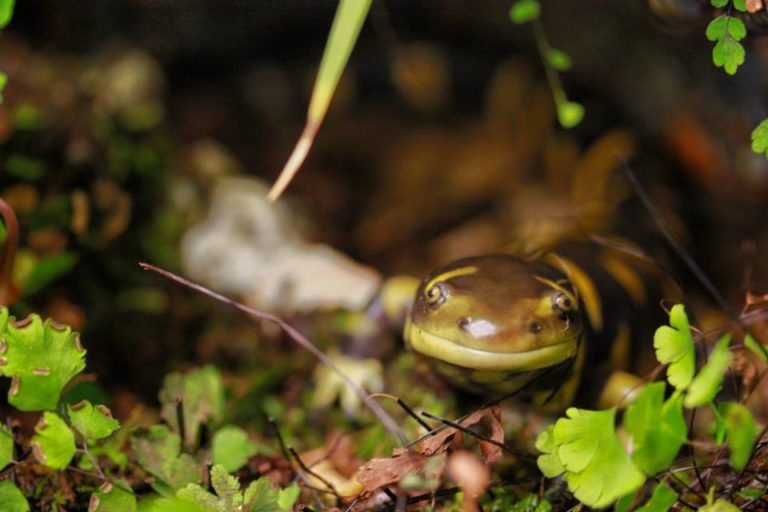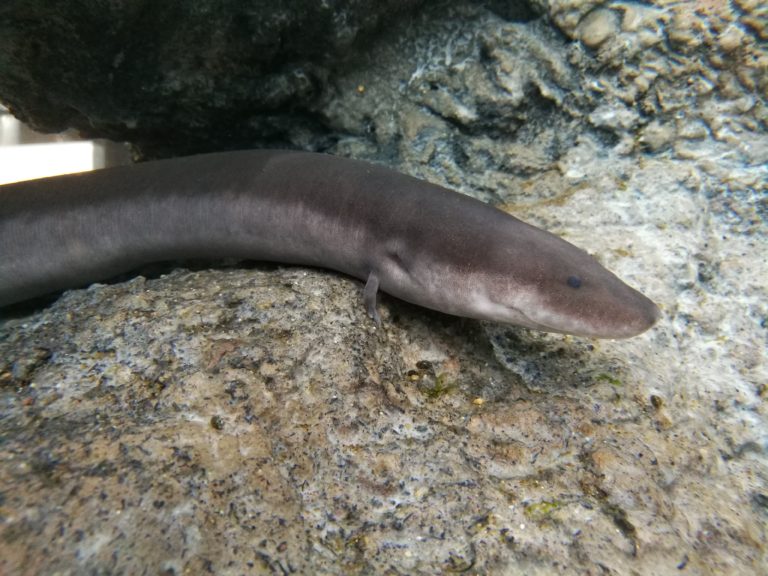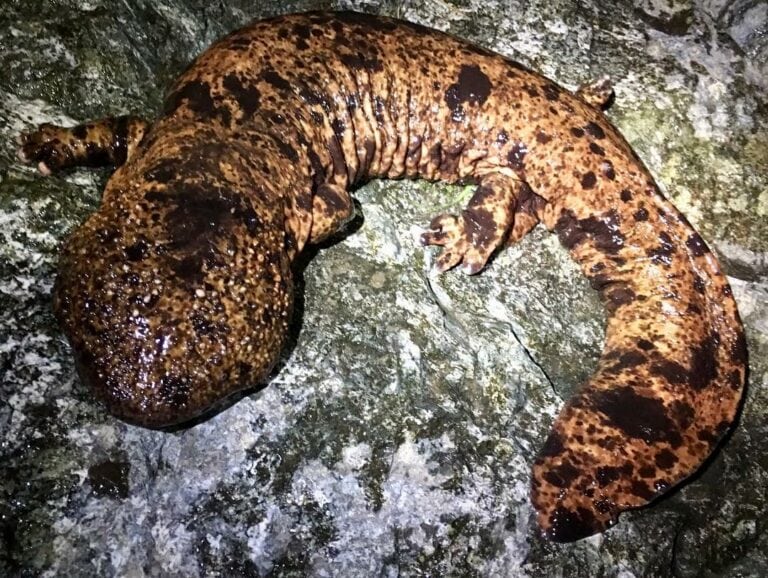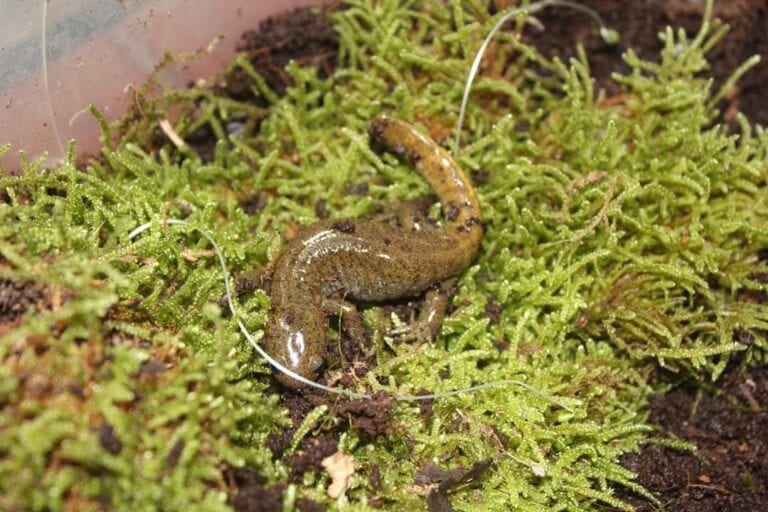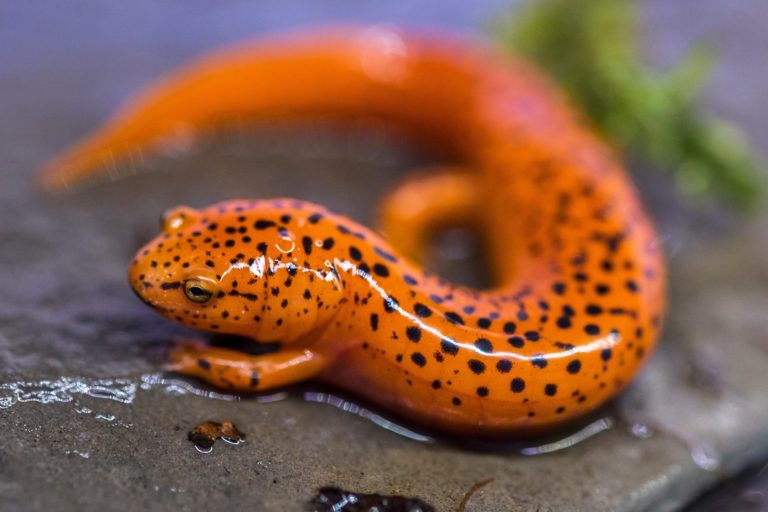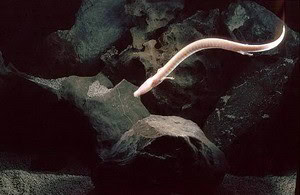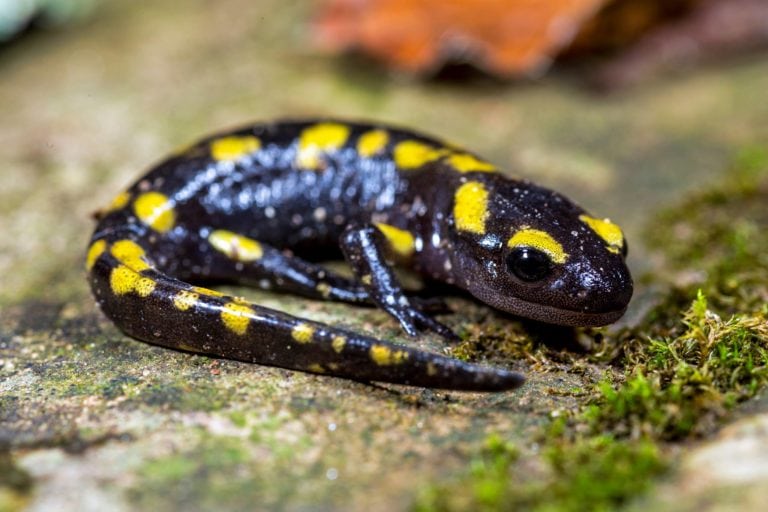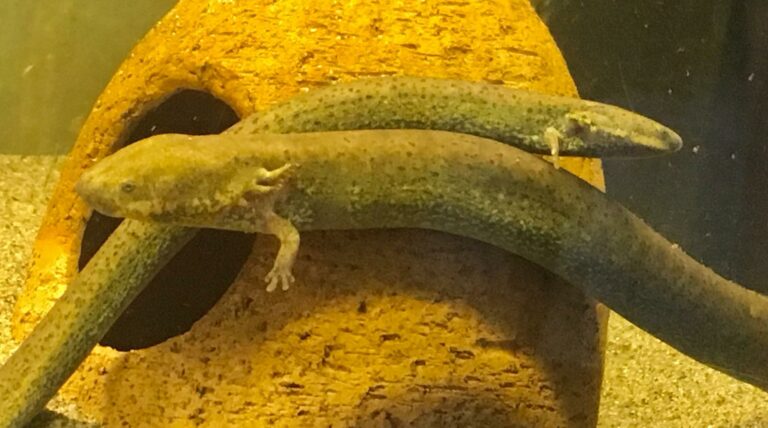Species
Ambystomatidae
The Mole Salamanders are a group of approximately 30 existing species, all currently in a single genus (Ambystoma). These salamanders are endemic to North America, and are characterized by stout bodies, moderate size, and a tendency to live in burrows, reaching for the water only to breed, hence why the name “mole salamanders”. One of the most popular species in the group is the Axolotl (A. mexicanum), both used in research due to its Paedomorphosis, as well as being a popular as hardy pet.
Amphiumidae
The Amphiuma are the only members of the Amphiumidae. These salamanders, native on South-East United States, are characterised by long, slippery eel-like body, but unlike members of the sirenidae, they have 4 limbs and lack external gills. The 3 only existing species are named after their toe’s number:
- Three-toed Amphiuma
- Two-toed Amphiuma
- One-toed Amphiuma
Cryptobranchidae
The members of the Cryptobranchidae family are large aquatic salamanders, commonly referred to as Giant Salamanders. Extinct members of this family are among the oldest salamander fossils, dating back to the middle Jurassic. The family is composed by the genus Cryptobranchus in North America, and Andrias in China and Japan. The Chinese Giant Salamander (Andrias davidianus) is the largest salamander species, reaching up the 1.8m in length.
Hynobiidae
This Asiatic salamanders are found all over Asia, and in European Russia, and are closely related to the giant salamanders. About half of the known species are endemic of Japan.
Unlike other salamanders, hynobiidae practice external fertilization, or spawning, where the female lays two egg sacks of up to 70 eggs each, which the male then fertilises.
A few species have reduced lungs, or no lungs at all.
Plethodontidae
Lungless Salamanders are the family with the largest number of species, and it is very widespread, ranging from North America to Brazil, with a few species in Europe and Asia. Their most distinctive feature is the lack of lungs, breathing instead through their skin. Many species do not have an aquatic stage, laying eggs on the ground, and many have projectile tongues to catch insects, which can fire almost the entire body length.
Proteidae
The family Proteidae is formed by two genus (Necturus & Proteus) present in the Balkan Peninsula and North America. Members of this family are characterised by paedomorphosis, preserving larval feature in adulthood. Necturus are found in North America, and commonly called Mudpuppy.
The Olm is the only member of the Proteus family, and it is endemic of the underground caves of the Balkan Peninsula. It shows common cave-dwelling characteristics such as lack of pigmentation and blindness.
Rhyacotritonidae
Recently split from the Ambystomidae, the family is composed by four species in the genus Rhyacotriton. These salamanders are brook-dwelling salamanders native of the North-Western coast of the United States, and are characterized by unique squared-off glands behind the vent in adult males, the absence of an operculum and opercularis muscle, and reduced lungs. Read More…Salamandridae
With more than 55 species in 15 genus, this is the most morphologically and behaviorally diverse family of salamanders. Salamandridae are very widespread, occurring primarily in Europe and Asia, with 2 genus in North America.
Sirenidae
The sirens, native of SE United States and northern Mexico, have very distinctive characteristics and the members of this family are not closely related to any other family of Salamanders. They have eel-like bodies, with very small fore limbs, lacking hind limbs altogether, they are neotenic and, uniquely among salamanders, while carnivorous they have been observed eating plant material.
